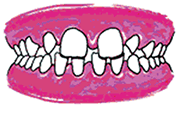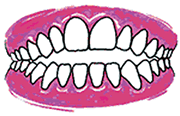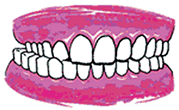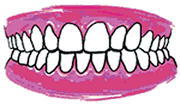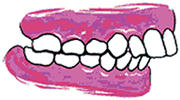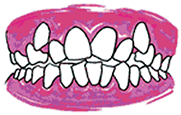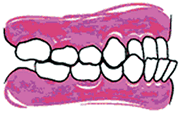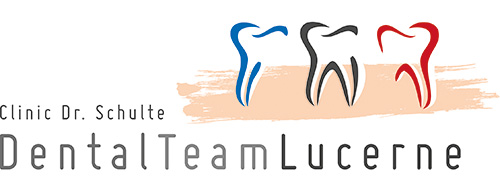Orthodontics
Treatment with Orthodontic Appliances for Children and Adults

Straight, regular teeth are attributes for life. Unfortunately nature is not always that kind: over 50% of children have malocclusion (dysgnathia), which require orthodontic treatment with dental braces. There are also many adults who suffer from malocclusion, as in the past orthodontic treatment was not used to correct tooth alignment or treatment was not carried out properly.
Our practice focuses on aesthetics and function, which makes orthodontics an ideal addition to the treatment we offer.
We are fortunate to have experienced orthodontists, who works closely with Dr. Schulte, and the other specialists of our team in providing orthodontic treatment for children and adults.
Modern orthodontics has developed into an independent, extensive specialised area – the information provided here is also extensive. You can read through all the information or select specific areas of special interest to you by clicking on the following headings.
Why Dental Braces?
Summary of the reasons
Aesthetics
Nowadays attractive, straight teeth and a charming smile play an important role socially. They represent youthfulness, dynamism and success, increase self-esteem and confidence and are a kind of optical calling card that creates an initial impression when meeting people. On the other hand misaligned, unsightly teeth can make people inhibited and shy and even contribute to depression in those predisposed to the condition.
Prophylaxis of caries and periodontitis
Crowded, misaligned teeth often form hidden corners for bacterial deposits like plaque and tartar; these areas are difficult to clean. The result is that the risk of caries or periodontal disease is greatly increased in comparison with correctly aligned teeth.
Mouth breathing
Certain types of malocclusion (open bite) cause mouth breathing because the lips do not close correctly. This increases the risk of illnesses of the respiratory tract and often results in caries and periodontitis.
Speech defects
Malpositioned upper front teeth can contribute to speech defects such as a lisp.
Reduced masticatory function and incorrect loading
A poor occlusion impairs masticatory function, which can cause problems with the alimentary tract and damage to the teeth (abrasion, loosening) and temporomandibular joints due to overloading. Incorrect loading of the masticatory muscles and temporomandibular joints can result in facial pain and headaches, noise in the ears (tinnitus) as well as stresses and incorrect posture of the spinal column.
Common Types of Malocclusion (Dysgnathia):
